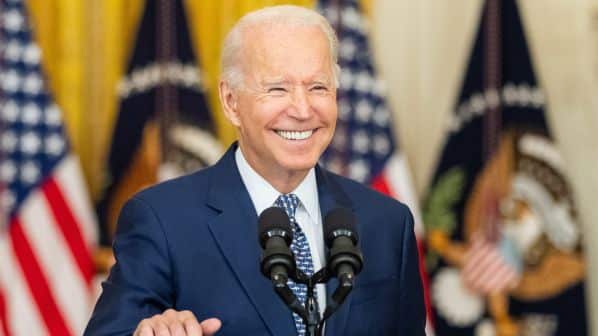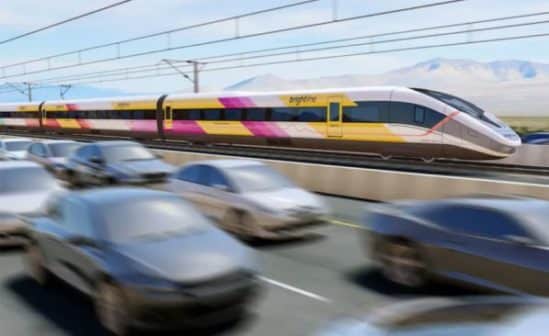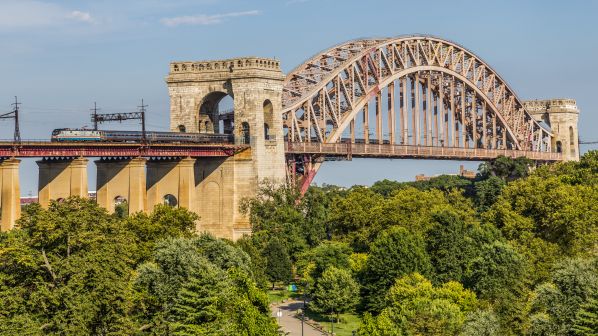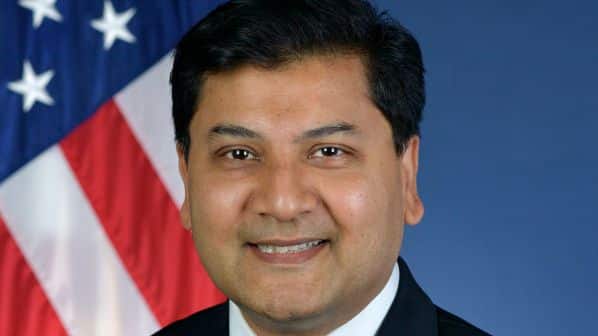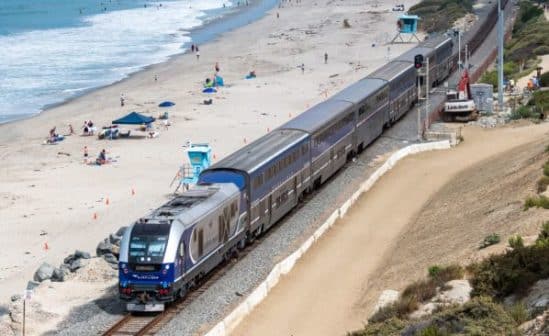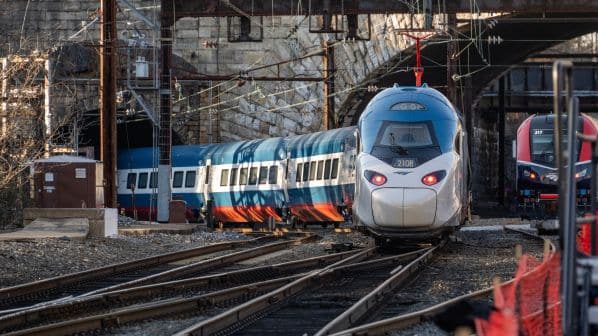THE Biden administration confirmed on December 8 that 10 inter-city rail projects are the beneficiaries of $US 8.2bn in grant funding from the Federal-State Partnership for Intercity Passenger Rail programme, including $US 1.1bn for the project to introduce passenger service on a 260km route between Richmond, Virginia, and Raleigh, North Carolina.
The funding will support necessary upgrades to the CSX-owned S-Line track at the southern end of the route, between Wake Forest and Raleigh, to accommodate passenger trains.
As well as California high-speed, which has secured $US 3.1bn, and Brightline West, which has netted a $US 3bn grant, as revealed earlier this week, the other major beneficiary is a project to improve infrastructure from central Washington, DC, south to Richmond.
This $US 729m grant will primarily fund the replacement of the Long Bridge across the Potomac River. It will also support improvements to L’Enfant’s Plaza Virginia Railway Express (VRE) station and support the addition of sidings near Woodbridge, Brooke, and Spotsylvania, Virginia.
The other projects to benefit are:
Keystone West - Pittsburgh - Harrisburg - $US 143.6m
Chicago Union Station mail platform reactivation - $US 49.6m
Downeaster Corridor - New Brunswick - Massachusetts State Line - $US 27.5m
Empire Builder improvements in Malta, Montana - $US 14.9m, and
Alaska Railroad milepost 190.5 bridge improvements - $US 8.2m.
Raleigh - Richmond
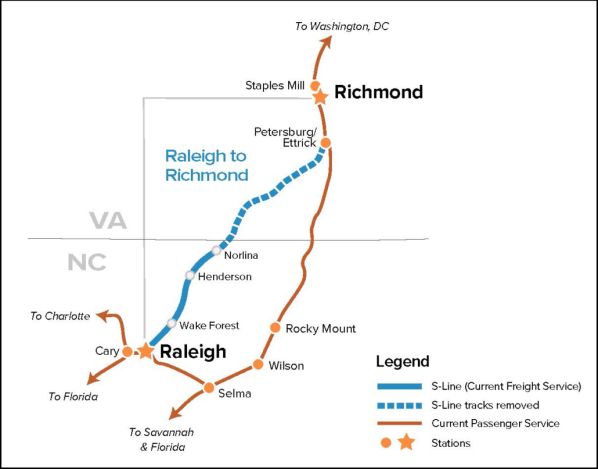
As well as track upgrades, the funding will support 11 grade separations and the closure of multiple level crossings. The North Carolina Department of Transportation (NCDOT) says the funding will enable passenger trains to operate at up to 177km/h on the S Line, compared with up to 128km/h on the existing passenger route via Selma, Wilson and Rocky Mount. The new alignment is expected to reduce current journey times by 1h 30min.
The work will also introduce passenger service to Norlina and Henderson, North Carolina. However, there was no indication of when funding would be available to restore the S-Line track removed between Norlina and Pettersburg/Ettrick, which is required to introduce the through service to Richmond.
Half of the federal funding will come in the current federal fiscal year, with the rest coming between 2024 and 2026. North Carolina Department of Transportation and Amtrak will also provide 20% in matching funding to support the project.
“This $US 1bn grant for North Carolina to make progress on the Raleigh - Richmond Rail Line is a big win for economic development in the region,” says North Carolina senator, Mr Tom Tillis.
In the long-term, the state is targeting the introduction of high-speed passenger infrastructure between Charlotte and Atlanta, which could extend to Miami.
Corridor ID programme
This is one of the projects set to benefit from $US 34.5m in funding allocated to the Corridor Identification and Development programme. The programme serves to guide passenger development on 69 identified rail corridors in 44 states by providing a planning framework for future investments with up to $US 500,000 available for each project.
Some of the specific projects that will benefit are:
- Scranton - New York, reviving a dormant rail corridor between Pennsylvania, New Jersey, and New York, to provide up to three daily trips for commuters and other passengers.
- Colorado Front Range, a new rail corridor connecting Fort Collins and Pueblo to serve an area that currently has no passenger rail options.
- The Northern Lights Express, connecting Minneapolis and Duluth, Minnesota with several cities in Wisconsin.
- Cascadia High-Speed Rail, a proposed new high-speed rail corridor linking Oregon, Washington, and Vancouver, with entirely new service, and
- Charlotte - Atlanta, a new high-speed rail corridor linking the Southeast and providing connection to Hartsfield-Jackson Airport.
Amtrak also confirmed that its four applications had been successful.
- Texas High-Speed Rail Corridor: this proposed corridor would connect Dallas and Houston, Texas, with a new, dedicated and grade separated high-speed passenger rail service. This would provide new service on a new alignment, with station stops in Dallas, Brazos Valley and Houston.
- Long Island Northeast Regional extension: this proposed corridor would extend three existing daily Northeast Regional round trips between Washington, DC, and New York City east to Ronkonkoma, NY, with stops at Jamaica (Queens, New York) and Hicksville, New York. This would entail track, station and infrastructure upgrades to accommodate these trains and better integrate Amtrak service with Long Island Rail Road commuter service.
- Daily Cardinal service: this proposed corridor would increase Cardinal service to operate daily, versus three days per week currently. This route operates between New York City and Chicago via Philadelphia, Baltimore, Washington, DC, Virginia, West Virginia, Kentucky, Ohio and Indiana.
- Daily Sunset Limited service: this proposed corridor would increase Sunset Limited service to operate daily, versus three days per week currently. This route operates between Los Angeles and New Orleans via Houston, San Antonio and El Paso, Texas; Tucson, Arizona; and other communities.
The Biden administration’s signature Infrastructure Investment and Jobs Act provides $US 36bn for the Federal -State Partnership for Intercity Passenger Rail programme over five years, divided into five equal annual tranches of $US 7.2bn, with the proviso that no more than two-thirds of the funding supports projects on the Northeast Corridor (NEC).
The administration confirmed the allocation of $US 16.4bn in grants to 25 NEC projects in November. A further 70 projects in 35 states benefitted from $US 1.4bn in Consolidated Rail Safety and Infrastructure Improvements (Crisi) announced in September.
For detailed data on North American rail projects, subscribe to IRJ Pro.
